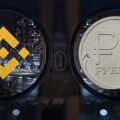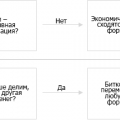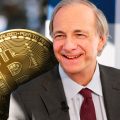The emergence of Bitcoin sets the stage for a key achievement and huge victory for humanity: secessionmoney from the state.
In this post I will try to analyzequalities that make Bitcoin unique, and I will share with you my vision of how this digital commodity can break the shackles of national currencies. I will talk about the evolution of Bitcoin from a simple payment network to the status of digital gold, why Bitcoin is essentially a living organism, adapting to new situations and overcoming any difficulties that stand in its way, and finally, how Bitcoin still has a way to go to conquer the entire digital realm.
Only now, 10 years after its creationBitcoin, a picture of topics emerging around cryptocurrency is starting to take shape more or less. Nick Carter wrote a groundbreaking article on the narratives and concepts surrounding Bitcoin and how they have changed over time. Here I will largely rely on his conclusions.
Carter has come to a conclusion - and I'm inclined with himagree - that Bitcoin is not just a technology, and it is not the embodiment of any one idea. The narratives behind any asset are determined by the market and the “public,” and Bitcoin is definitely a big melting pot of ideas.
After going through the stage of experimental incarnationthe concept of "electronic cash" (2009-2015) and through the status of the anonymous currency of the darknet (2010-2018), today Bitcoin continues to strive to serve as a cost-effective payment network - perhaps through the Lightning Network - and play the role of censorship-resistant "digital gold ".
We can't say for sure if thesenarratives like "electronic cash" and "darknet currency" narratives have faded away, or they will live on and mix with ideas about a cryptosphere reserve currency, a programmable public database, or an uncorrelated financial asset.
What Carter helps readers understand is how easily ideas and narratives around technology change, especially if that technology separates money from government.
But let's not get ahead of ourselves.
Bitcoin as a living organism
To grow out of humble roles likea means for cheap payments or darknet currency, to the status of a global reserve cryptocurrency or censorship-resistant digital gold, Bitcoin had to evolve.
I want to emphasize that at some pointthe community supporting this technology seemed to "switch the speed" and realized that one simple proof-of-work cryptocurrency is actually capable of changing global paradigms - slowly but surely.
The prevailing narratives suggest thatthe vast majority of early adopters did not initially see Bitcoin as a potential replacement for central banks. Moreover, they did not notice that it could have the properties of hard money or become the first global and independent settlement network.


Slime mushrooms design the Tokyo subway system (Image: Brandon Quittem)
Making great things takes time. Let's try to find a source of inspiration in nature. One of the most amazing organisms living on this planet is the mycelium - the communication layer between fungi. The mycelium helps fungi to communicate over long distances. However, it took the fungi millions of years to develop such a complex network of mycelium. This is the fate of any great and fateful technology: it takes time to create and implement. And Bitcoin is no exception.
This is exactly what Brandon Quitten showed us in his brilliant research, comparing the Bitcoin network with a living organism (fungi, mushrooms).
Here I want to give one example of how decentralized networks can be significantly more effective than centralized ones in making decisions.
“Scientists conductedexperimentin which an ancient fungus (slimy mold orslime mold) was stimulated to recreate the Tokyo subway system. A piece of the slime mold's favorite food (oatmeal) was placed at each subway stop (node).
After a while, this slimy moldhas grown, connecting all the nodes / stops in an even more efficient way than was done in a project provided by the engineering committee for central planning hired by the Japanese government. "
Isn't it surprising that mushrooms can be smarter than scientists?
Of course, this example looks a bit stretched, but it clearly shows how decentralized networks can perform better than traditional hierarchical decision-making processes.
But the road to global Bitcoin adoption is painful,is full of ups and downs and is more likely to experience problems such as critical software bugs and regulation kinks. Therefore, we all better be patient and try not to lose sight of the macro picture: the long-term perspective of the Bitcoin network.


(Image: author)
Bitcoin: the road to independence
Before we dive into the main topic of this article, I would like to explain why Bitcoin is the de facto asset that can change the way the world functions.
In the introduction, I mentioned the qualities that Bitcoin possesses that make it an incredible opponent for central banks, settlement layers, and other payment and financial institutions.
Bitcoin has opened the door to digital scarcity. With the digital scarcity, we were able to create deflationary (or disinflationary) assets that have the properties of hard money.
With scarcity embedded in a digital asset withproperties of hard money (that is, in Bitcoin), this new system has a chance to become a full-fledged Internet currency. The growth of the network has been driven primarily by the fact that the transactions of this asset are completely transparent, and the protocol rules are fairly easily applicable and verifiable, but at the same time they are extremely expensive to try to change.
But beyond that, Satoshi also introduced an anti-inflationary measure known as "halving," a halving of the block reward that occurs at intervals of about four years.
Not only that, Bitcoin also gave birth to triple ledger. And in case you are wondering why triple accounting is so much better than double accounting, I will tell you in a nutshell.
Double-entry bookkeeping requires that each partytransactions were kept in its own register. At the same time, for a third party (for example, the tax office), triple accounting is much easier to audit, since the transactions of all parties are stored in one public ledger.
All of these unique developments laid the foundation for decentralized finance (sorry Ethereum, Bitcoin was the first DeFi).
However, the greatest achievement is yet to come.
Bitcoin as digital hard money
To fully understand concepts such asopen source currency, digital hard money, DeFi, or the ability to store value in digital form without the participation of a centralized entity that controls transaction flows and / or the user accounts themselves, you must first of all recognize that money and the state are two separate entities.
Today, currency is created mainly throughdebt and deposits. Basically, this means that either central banks issue new currency that local governments acquire through IOUs, or people put the currency into the bank as a deposit (or debt), which also gives banks the ability to use these reserves to create a new currency (credit ).
As of 2018, banks around the world had liquid reserves equal to 17.7% of their total assets (according to the World Bank).


Bank reserve liquidity ratio, according to the World Bank
The Fed recently cut its reserve requirementto zero, which can cause quite understandable concern. But in fact, against the backdrop of COVID-19, many banks have actually increased their reserves in order to protect themselves from possible economic consequences.
Why is this so important? Because this method of creating currency is only possible thanks to the actions of government agencies.
The main reason for the abolition of the gold standard in 1971 is the same as that of the 1933 edition of the decree # 6102, which prohibited Americans from owning gold: to give the government the right to print money without restrictions.
However, money is more than just currency.
The thought I am trying to convey to you isis that hard money such as gold and bitcoin exist in nature and cannot simply be printed. The production of an additional unit of them requires significant resources, which means that it is much more difficult for central banks to use deposits to create "value" "out of nothing", and for governments to continue to build up public debt.
Bitcoin: separating money from the state
At the end of the thesis on why the separationmoney and government is the most amazing invention of the century, and how Bitcoin allows humanity to come to this, some current issues need to be discussed with how currency is produced today and what issues from such a structure.
The only reason the (corporate) welfare state can exist is because of fiat money and fiat money has always been and always will be autocratic. # Bitcoin is our hope in a better system.
— Jimmy Song (송재준) (@jimmysong) April 23, 2020
@jimmysong: The only reason there can be a (corporate) welfare state is because of fiat money, and fiat money has always been and will always be autocratic.
As Jimmy explains in the above tweetSong, bitcoin developer, teacher and author, fiat currency is an autocratic system in which governments are forced to use a specific currency within their state borders. One of the main problems with fiat currencies is that they can provoke significant inflation, and in some cases, hyperinflation.
In addition, giving the right to issue currency to a select circle of people, we give rise to other problems.


S&P 500 and Industrial Index chartsDow Jones 2008–2020 (: https://www.tradingview.com/x/O5sPX7vu/) Periods of quantitative easing are highlighted in pink. Blue – periods of quantitative tightening.
Central Bank Measures Aroundthe world, such as quantitative easing, seem to favor only a select few, not the majority of citizens. And as you can see from the chart above, the periods of quantitative easing are quite correlated with the rise in equity markets.
Which invariably generates quantitative easing,so it is manipulation of prices of currencies and assets by central banks. After all, few of the existing companies have the ability to issue bonds and synthesize debt into financial products. Moreover, such companies are usually public and use cheap "freshly printed" money to enter the market and pump up the value of their own shares through their buybacks.


Share repurchase by S&P 500 companies (source)
If we can conclude that the currency is notdistributed fairly, since a select few people and companies use their privileged position, what can we do about it? Is there a way for Bitcoin to really solve this problem?
The short answer is yes. Bitcoin really solves it.
Here I will draw your attention to the fact that the number of Bitcoin addresses containing more than 1000 BTC decreases compared to the number of addresses containing small amounts (from 0.1 to 1 BTC).


Distribution of BTC volumes between addresses containing from 0.1 to 1 BTC and addresses containing more than 1000 BTC.
The data paints a pretty impressive picture. The percentage of total issued bitcoins held by addresses with 0.1-1 BTC appears to be increasing in comparison to addresses containing 1000+ BTC, which shows how much Bitcoin tends to be evenly distributed.
Since 2013, the number of bitcoins heldaddresses from 0.1-1 BTC, doubled from ~ 15% to ~ 30%. At its peak, the volume of bitcoins held by addresses with 1 BTC or more accounted for almost 45% of the volume of bitcoins held by addresses with 1000+ BTC. Interestingly, this peak coincided with a record high of the BTC against the dollar.
It turns out that the Cantillon effect on the Bitcoin networkthe exact opposite of traditional currency networks: since no one can dilute the value of your position by increasing the supply of the asset (bypassing the public release schedule), your bitcoins do not lose value.
Hence, the value of your satoshi is neverwill be blurred. This means that the Cantillon effect with Bitcoin disappears, since no one in this network has the ability to allocate an additional, not planned in the protocol, currency for issuance and transfer to a limited number of individuals or companies. Bitcoins can only be issued through the provision of valid proof of work, proof-of-work.
consisted in the complete separation of the issue of money from the central bank, state or other body of centralized government. Perhaps this is the main achievement of the century.
Conclusion
In closing, I would like to draw your attention to a key point recently expressed by Ray Dalio, CEO of investment firm Bridgewater Associates.
In one of his last interviews (eng.) Dalio mentions an aspect that most people tend to forget: technology changes much faster than human behavior, morals and values. Hence the seemingly long time it takes for the massive adoption and spread of Bitcoin.
Remember the main technologies developed to date. Dig further into the past.
In fact, only when humanity separatedchurch from the state, by inventing the printing press, it was able to give impetus to centuries of enlightenment. Before that science practically did not exist, and the clergy completely dominated the published works.
The same logic can be extended to currency. As long as it is connected with the central authority, the ability of people to be truly free will be limited. Only when we, as a global species, recognize that money must be decentralized and not tied to centralized institutions of power, can we possibly dream of giving people an easy way to accumulate wealth across generations.
Bitcoin being a digital asset with propertieshard money solves this problem. It deprives any government or central authority of the ability to easily manipulate the population by destroying the purchasing power of the local currency.
If people get the opportunity to easily, in a few clicks, refuse to participate in the fiat system, this speaks of the actual birth of digital gold.
What's the point of keeping a fortune in inflationarycurrency when just a few clicks away you have a digital asset with hard money properties that is most likely to protect your hard-earned money in the long run?
In my humble opinion, there is a chance that Bitcoinwill be the spark that will ignite the flame of the fight against state-controlled currencies. Every year, with every successfully passed test, be it a bug, hacking, fraud, or even state. regulation, the likelihood that Bitcoin will continue to exist is increasing.
This means that the likelihood that it will become the main driver of the formation of a global economy of hard money also increases.
</p>



